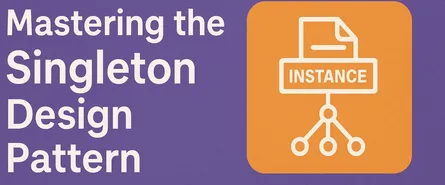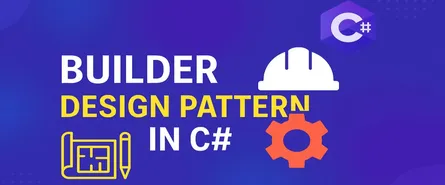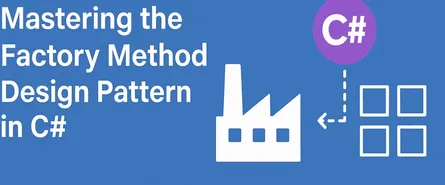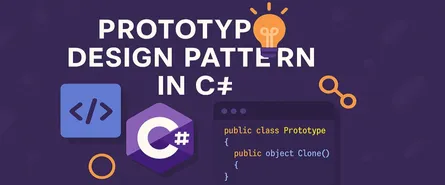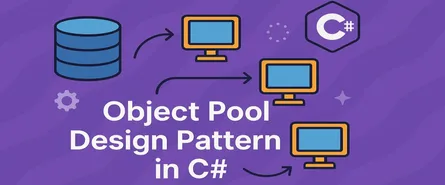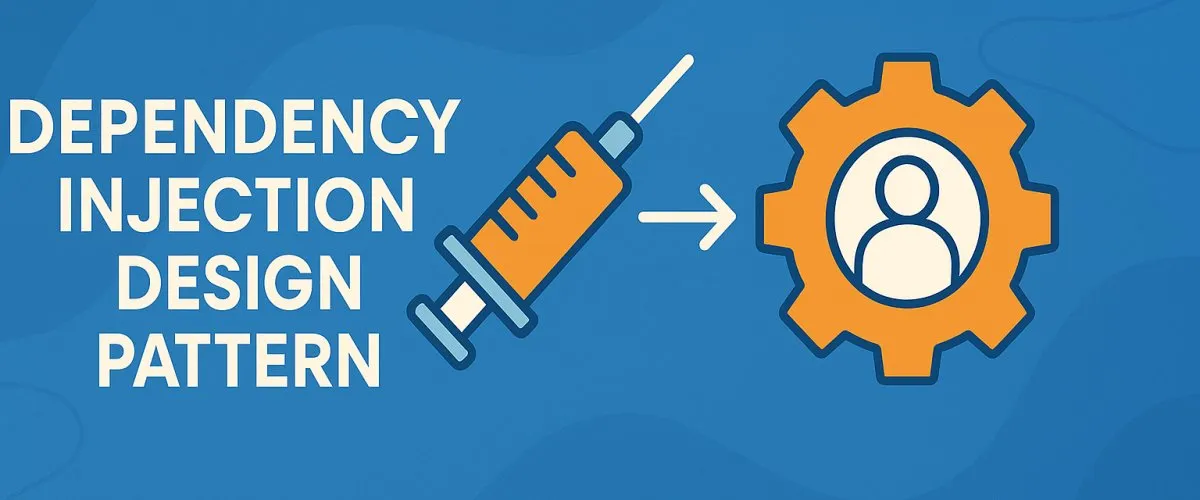
Dependency Injection Design Pattern: Your Ultimate Guide (with C# Examples)
- Sudhir mangla
- Design Patterns
- 26 Mar, 2025
Ever felt your software code is like spaghetti—hard to untangle, messy, and frustratingly intertwined? Ever wondered if there’s a cleaner way to organize your dependencies so you don’t lose your sanity? You’re in luck! Today we’re exploring the Dependency Injection (DI) design pattern, a powerful strategy that simplifies code, boosts flexibility, and helps you avoid messy code nightmares.
Ready? Let’s dive in!
🎯 What exactly is Dependency Injection, anyway?
Imagine your software as a restaurant. When a customer orders a dish, does the chef go out and farm the vegetables? No way! Ingredients are delivered by a supplier. The chef simply cooks using provided ingredients.
Similarly, DI is a design pattern where dependencies (ingredients) are supplied to a class (chef) rather than having the class directly creating or managing those dependencies. It’s about passing objects (dependencies) to other objects (clients) instead of having the client create them itself.
Simply put:
- Without DI: Your class directly creates or manages its dependencies.
- With DI: Your class relies on an external source (usually called a container) to provide those dependencies.
🛠️ Core Principles of Dependency Injection
Dependency Injection revolves around three core principles you’ll want to tattoo onto your programming soul:
1. Inversion of Control (IoC) 🌀
Control of dependency creation is inverted—it shifts away from the class itself to an external entity (often called a container). Think of it like letting someone else handle grocery shopping, freeing you up to cook without worrying about finding fresh veggies.
2. Dependency Inversion Principle (DIP) 🔄
Your classes depend on abstractions, not concrete implementations. Why? Because abstractions are stable, flexible, and easy to mock for testing. Like using a USB charger (abstraction) that fits multiple devices rather than a charger designed only for one gadget.
3. Single Responsibility Principle (SRP) 📌
Every class should have one job and one job only. DI helps classes maintain clear, single responsibilities by outsourcing dependency creation to external providers. No multitasking chefs here, folks!
🔍 When should you use Dependency Injection?
Here’s a quick guide to spot when DI is the perfect choice:
- Testing: DI makes unit testing easier by injecting mock dependencies.
- Loosely Coupled Components: If you want flexible code that easily adapts to changes without a domino effect, DI is essential.
- Configurable Components: When you want to dynamically swap implementations without altering code, DI shines brightest.
- Maintainable Code: As your app grows, DI helps manage complexity by keeping everything neat, tidy, and modular.
⚙️ Key Components of Dependency Injection
Understanding DI becomes much simpler when you break it down into its core components:
- Service: The class or component that provides functionality (like a logger, database handler, or payment processor).
- Client: The class or component consuming services.
- Injector (Container): Responsible for creating and providing instances of the services to the client.
In our cooking analogy:
- Service: Ingredients 🍅🥕
- Client: Chef 👨🍳
- Injector: Supplier 🚚
🧩 Implementation: Dependency Injection in C# (Detailed Example)
Let’s stop the theory train and hop into some real code, shall we? We’ll demonstrate DI in C# using the famous Logger example.
Step 1: Define an abstraction
Create an interface ILogger that abstracts logging functionality:
// ILogger interface (abstraction)
public interface ILogger
{
void Log(string message);
}Step 2: Implement concrete classes
Now, let’s create concrete classes that implement the ILogger interface:
// Console Logger
public class ConsoleLogger : ILogger
{
public void Log(string message)
{
Console.WriteLine($"Console Logger: {message}");
}
}
// File Logger (another concrete implementation)
public class FileLogger : ILogger
{
public void Log(string message)
{
File.AppendAllText("log.txt", $"File Logger: {message}\n");
}
}Step 3: Implement Dependency Injection (Constructor Injection)
Here’s our client class (OrderProcessor) that uses dependency injection through its constructor:
public class OrderProcessor
{
private readonly ILogger _logger;
// Constructor injection
public OrderProcessor(ILogger logger)
{
_logger = logger;
}
public void ProcessOrder(string orderId)
{
// Processing logic here
_logger.Log($"Order {orderId} processed successfully!");
}
}Step 4: Wiring it up with a DI Container (.NET built-in)
Let’s use the built-in .NET DI container to manage our dependencies (typically done in Program.cs or Startup.cs):
using Microsoft.Extensions.DependencyInjection;
class Program
{
static void Main(string[] args)
{
// Setup DI container
var services = new ServiceCollection();
// Register dependencies
services.AddTransient<ILogger, ConsoleLogger>(); // Switch ConsoleLogger with FileLogger easily!
// Register client
services.AddTransient<OrderProcessor>();
// Build provider
var serviceProvider = services.BuildServiceProvider();
// Resolve dependency
var processor = serviceProvider.GetService<OrderProcessor>();
processor.ProcessOrder("A123");
}
}Output when executed:
Console Logger: Order A123 processed successfully!🎯 Why is this powerful?
Because switching the logger to write logs into a file or even sending logs to the cloud becomes as simple as changing this single line:
// Change logger with just this line:
services.AddTransient<ILogger, FileLogger>();Now, the logs magically appear in your file without touching the rest of your application. How’s that for flexibility?
🧐 Common Mistakes to Avoid
- Service Locator Anti-pattern: Avoid using a global container directly within your classes, as it defeats the purpose of DI.
- Too Many Dependencies: If your class needs a truckload of dependencies, reconsider the class’s design.
- Incorrect Lifetime Management: Be cautious with transient, scoped, and singleton lifetimes; pick wisely.
🚦 Different Ways to Implement Dependency Injection (with C# Examples)
Now, you might be thinking, “Is there more than one way to inject dependencies?” Absolutely! DI isn’t a one-size-fits-all solution. There are three main techniques to do this magic:
1. Constructor Injection (Most Recommended) 🚧
You’ve already seen this in action earlier, and it’s generally the most popular and recommended method.
Example:
// Constructor Injection Example
public interface IPaymentService
{
void ProcessPayment(decimal amount);
}
public class PaymentService : IPaymentService
{
public void ProcessPayment(decimal amount)
{
Console.WriteLine($"Processed payment of ${amount}");
}
}
public class ShoppingCart
{
private readonly IPaymentService _paymentService;
// Constructor injection
public ShoppingCart(IPaymentService paymentService)
{
_paymentService = paymentService;
}
public void Checkout(decimal total)
{
_paymentService.ProcessPayment(total);
}
}2. Property (Setter) Injection 🏡
This is when you set dependencies through properties after object creation. It’s less recommended because you can’t guarantee your dependencies are always set.
Example:
// Property Injection Example
public class Customer
{
// Property injection
public ILogger Logger { get; set; }
public void CreateProfile(string name)
{
Logger?.Log($"Profile created for: {name}");
}
}
// Usage:
var customer = new Customer
{
Logger = new ConsoleLogger() // inject dependency after object creation
};
customer.CreateProfile("Alice");3. Method Injection 🚀
Inject dependencies directly through methods, typically useful when a dependency is needed only by a specific method.
Example:
// Method Injection Example
public class ReportGenerator
{
public void GenerateReport(IReportFormatter formatter)
{
string report = formatter.Format("This is your report content");
Console.WriteLine(report);
}
}
public interface IReportFormatter
{
string Format(string content);
}
public class HtmlReportFormatter : IReportFormatter
{
public string Format(string content) => $"<html><body>{content}</body></html>";
}
// Usage:
var generator = new ReportGenerator();
generator.GenerateReport(new HtmlReportFormatter());🎨 Use Cases: When Dependency Injection Shines
Wondering about scenarios where DI really earns its keep? Check these out:
- Unit Testing: Easily inject mocks to isolate and test classes thoroughly.
- Web Applications: Quickly manage controllers, repositories, and services.
- Database Operations: Swap database connections easily, like switching from SQL Server to MySQL.
- Cross-Platform Applications: Implement platform-specific code effortlessly by injecting platform-dependent services.
🌟 Advantages of Dependency Injection
DI isn’t just popular because it’s trendy—it has serious benefits:
-
Cleaner, More Maintainable Code 🧹
Keeps your classes lightweight and modular. -
Easier Testing 🧪
Quickly mock dependencies, making unit tests a breeze. -
Flexibility and Scalability 📈
Effortlessly swap or upgrade dependencies without breaking your app. -
Promotes Loose Coupling 🔗
Components are independent, making your application less fragile and easier to refactor.
⚠️ Disadvantages of Dependency Injection
But hey, no silver bullet here. DI isn’t perfect—it also has a few drawbacks you should keep in mind:
-
Complexity for Newbies 🌀
Beginners might struggle initially, especially with understanding DI containers and lifetimes. -
Overhead and Performance Impact 🚦
Misconfigured or overused DI containers can introduce overhead. -
Harder Debugging 🐞
Sometimes tracing injected dependencies can be tricky without the right tools. -
Runtime Errors 🔥
Misconfiguration may cause errors at runtime rather than compile-time, leading to more debugging headaches.
🏁 Conclusion: Is Dependency Injection Right for You?
Dependency Injection might initially sound intimidating, but once mastered, it transforms your software design like nothing else. It’s not just another pattern—it’s a coding lifestyle change.
Think of DI as your software architecture’s best friend—always there to tidy up your messes, simplify your testing process, and adapt quickly to changes. Sure, DI has its quirks, but when used wisely, the advantages significantly outweigh the downsides.
If your goal is clean, testable, maintainable code that’s ready to scale or adapt at a moment’s notice, embracing Dependency Injection is a no-brainer. It might take a little practice to get comfortable, but trust me—once you experience its power, you’ll wonder how you ever managed without it!
So, what’s holding you back? Go ahead, inject some DI magic into your next C# project, and watch your code quality—and sanity—skyrocket! 🚀
